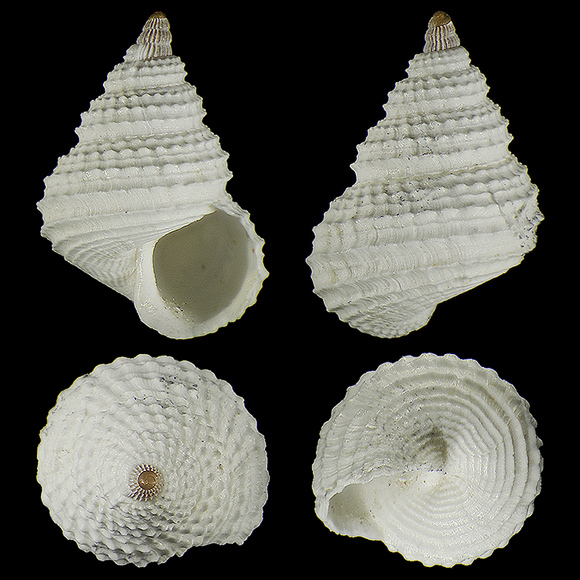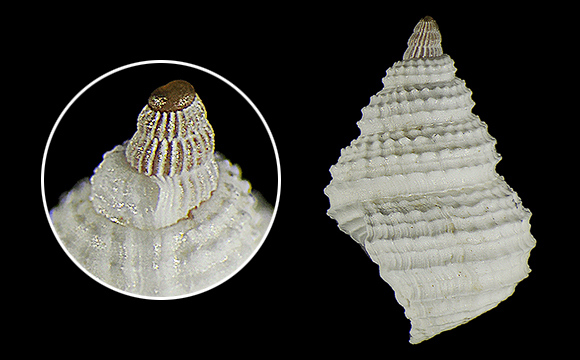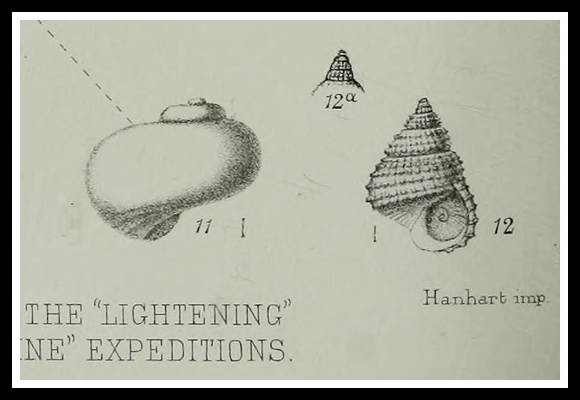
« Shell forming a short cone, solid, opaque, of a dull hue. Sculpture: spiral ridges covered with numerous minute tubercles or beads; there are four or five of these ridges on the last whorl, three on the penultimate, and two on the preceding whorl; the base is also encircled by fine spiral striae; the stiliform process [is] closely striated lengthwise […] Colour: white with a faint tinge of yellow. » – J. G. Jeffreys: “On the Mollusca procured during the ‘Lightning’ and ‘Porcupine’ expeditions 1868-70. (Part VI)”, Proceedings of the Zoological Society of London for the year 1883, p.114.
Above and below: 400m deep, Alborán Island. 3,5m.
Source: gruppomalacologicoscalaria.org.
Original pictures provided by A. Nappo (IT).
– (CC BY-NC-SA) –

« Spire rather short: whorls 3, besides the stiliform process [whose point] is slightly twisted and blunt. Suture deep. Mouth rounded, angulated above. Outer lip sharp, scalloped by the spiral ridges, expanded and reflected at the base of the pillar. Inner lip wanting or inconspicuous. Umbilicus none. Operculum yellowish-brown, having four to five volutions, the innermost being very small; these are crossed by curved and numerous striae in the line of growth… » – Ibid.

In fact, the shell looks a little like that of a Tectarius Valenciennes (Littorinidae) but with a different protoconch. Compared with the other members of the genus in the NE. Atlantic, tuberatus differs from cancellatus by its non reticulate appearance, and from tenuisculptus by its tubercles and the absence of radial microsculpture. Above, the species in Jeffreys, plate XX. Notice the mispelling on the name of the ship ‘Lightning’: “Lightening”, as if this vessel had ben built for some clarification purposes (which is, however, the aim of many scientific expeditions).